Knowing the difference between trees feels like the sort of basic knowledge we should all have under our belts, like the ability to tie a slip knot and the setting point for jam.
Here we will show you the key features of ash trees, which you are likely to encounter on your own winter woodland walk to help you learn how to spot them.
How to identify ash trees
Identifying Fraxinus excelsior - common ash
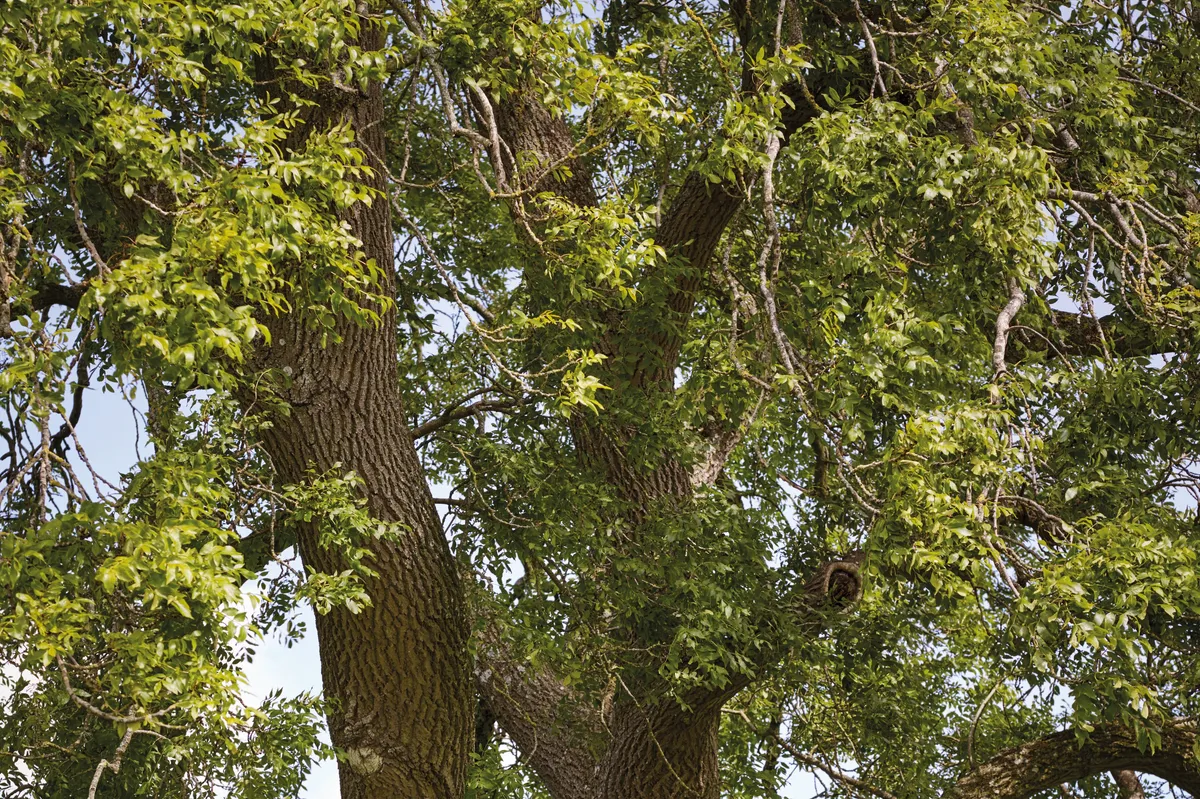
Ash is graceful, tall and striking in the landscape. The excelsior in its Latin name means high, elevated or lofty, and ashes can reach heights of around 45 metres. Ash is the third most common tree in Britain and has long been exalted for its strong, lightweight and easily worked wood, which is also of brilliant burning quality. But they are now under threat from Chalara dieback disease, which has caused widespread damage in continental Europe and has now spread to Britain. Evidence from Europe suggests that older trees may be able to withstand attacks for some time, before eventually being weakened enough to succumb to attacks from other pathogens. It is a worrying time for these beautiful trees.
Identifying ash bark
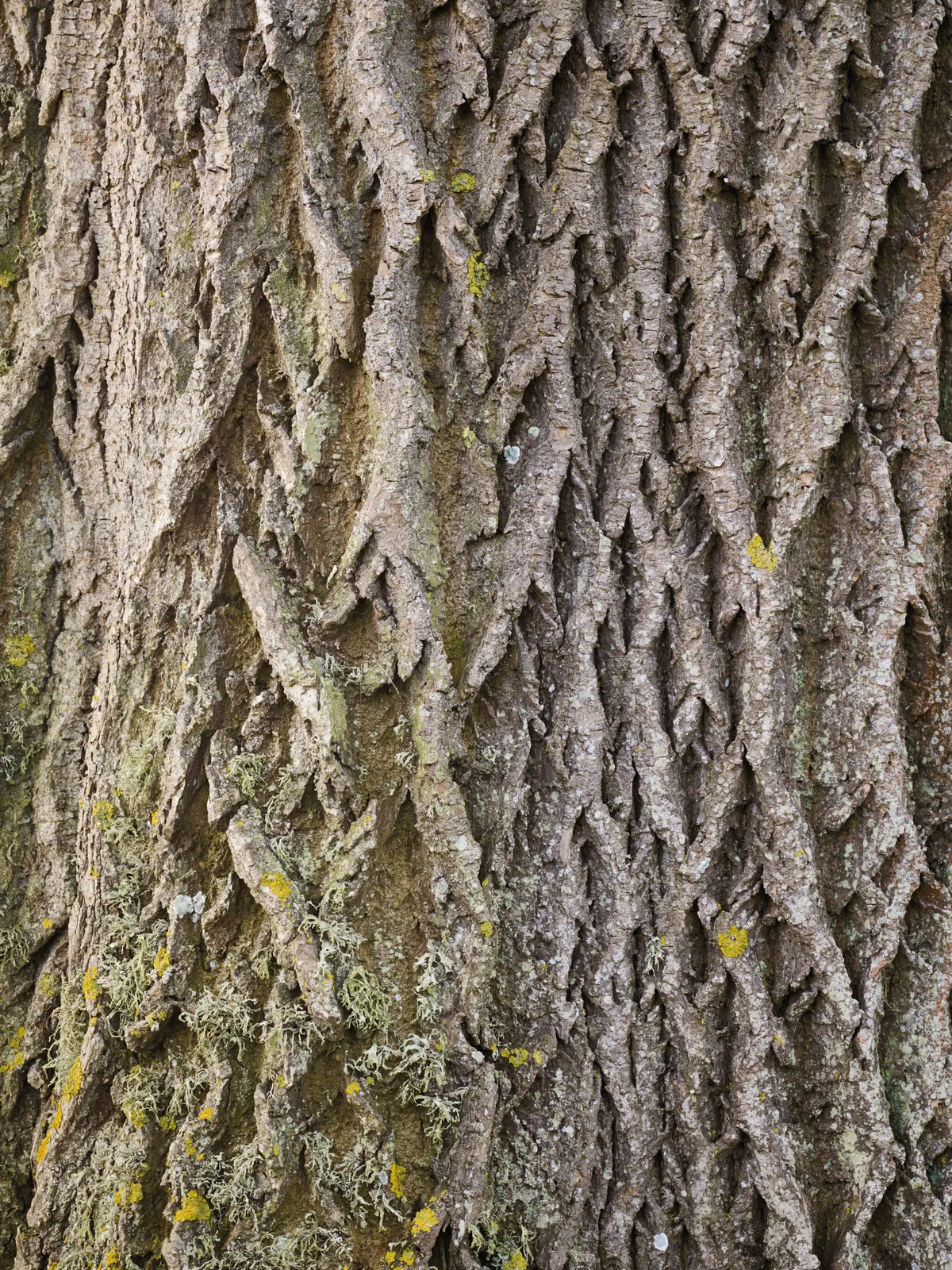
Young ash bark is smooth and grey brown, but as the trees age it becomes deeply fissured, often in diamond shapes with a suggestion of zigzags.
Identifying ash leaves
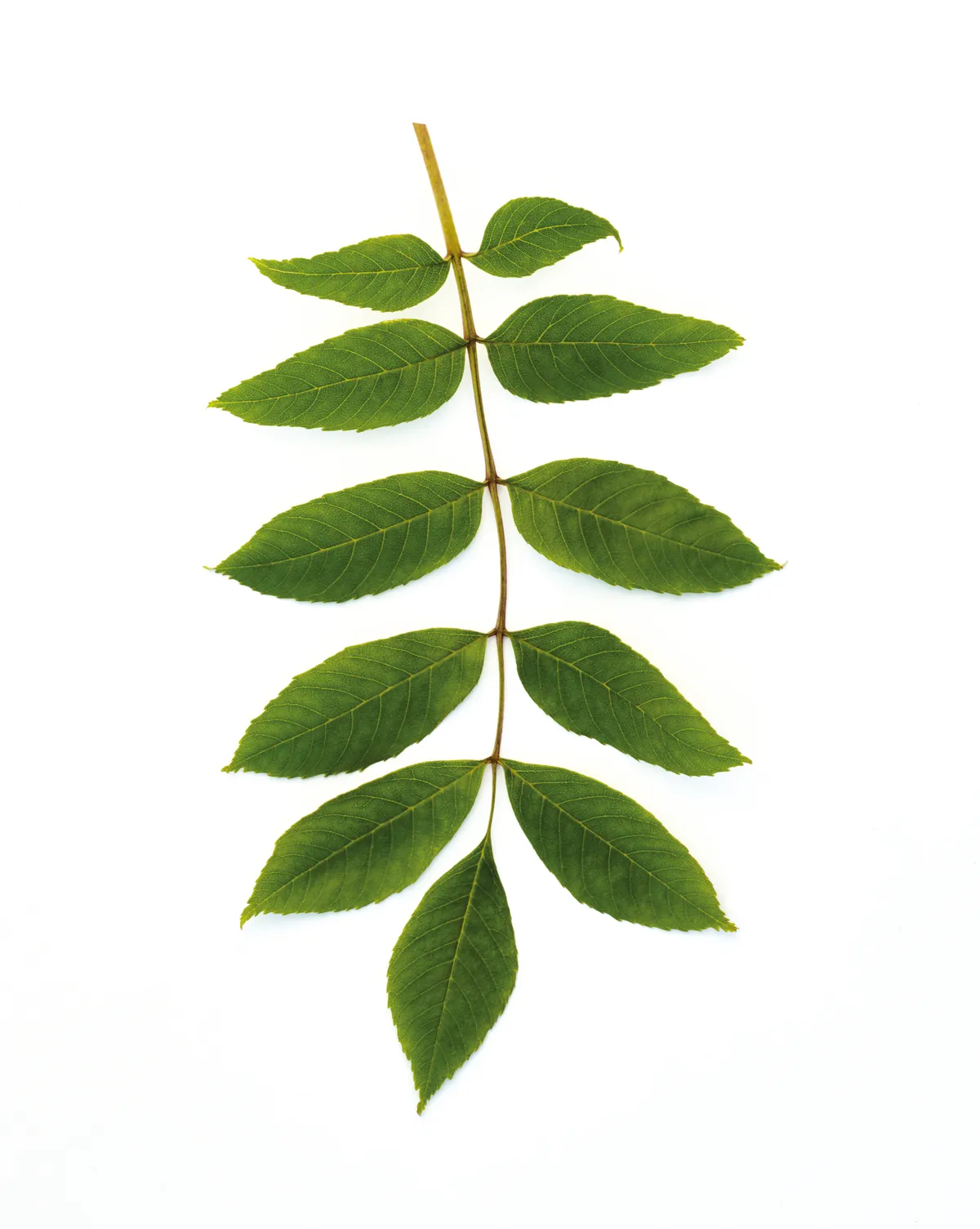
Each leaf comprises three to six pairs of elegant, tapering leaflets, arranged in pairs along the leaf stalk, plus a single leaflet at the end. Diva-like, the leaves emerge in late spring and drop in early autumn.
Identifying ash winter buds
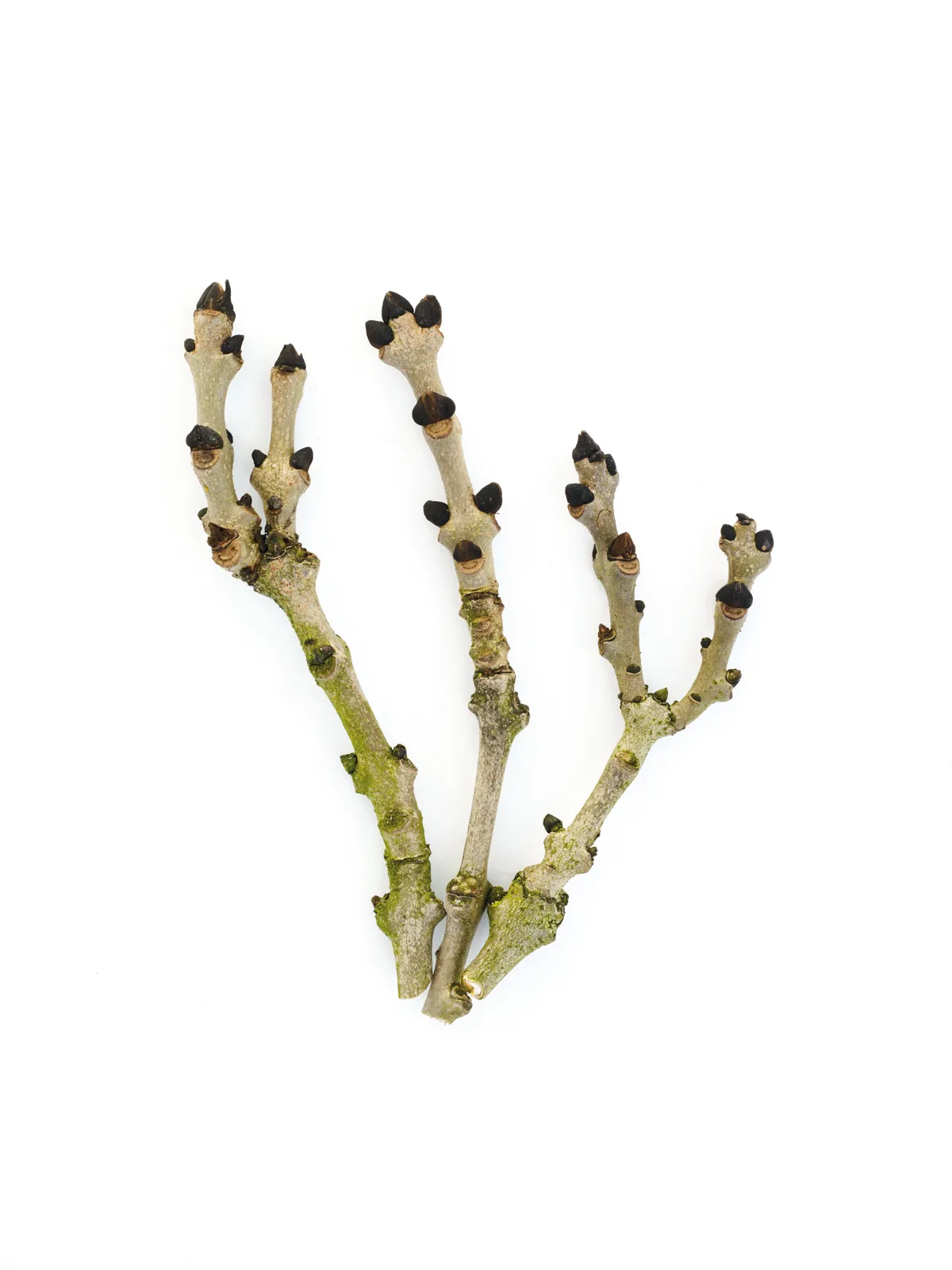
Ash buds are very distinctive, making the ash tree one of the easiest to identify in winter. The fat, black, pointed buds
are borne in opposite pairs.
Identifying ash seeds, or keys
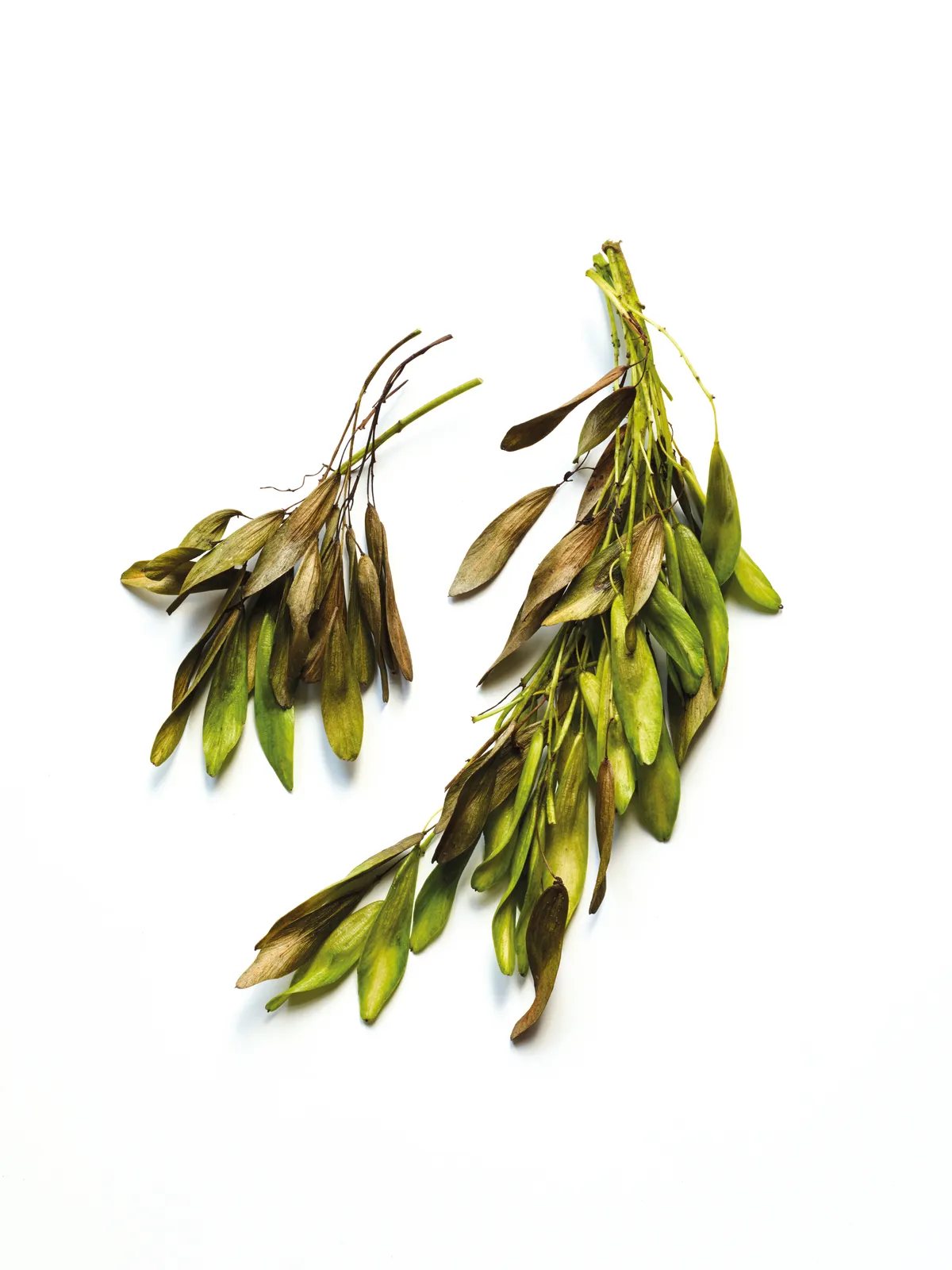
The seeds, known as keys, hang in heavy, shaggy bunches from the tree: lime green in summer, yellow in early autumn, rusty brown in winter, when they are very prominent.
The ash tree silhouette

Elegant, graceful and tall, often with a domed canopy. When trees are mature the lower branches weep down towards the earth before turning up again at the tips.
